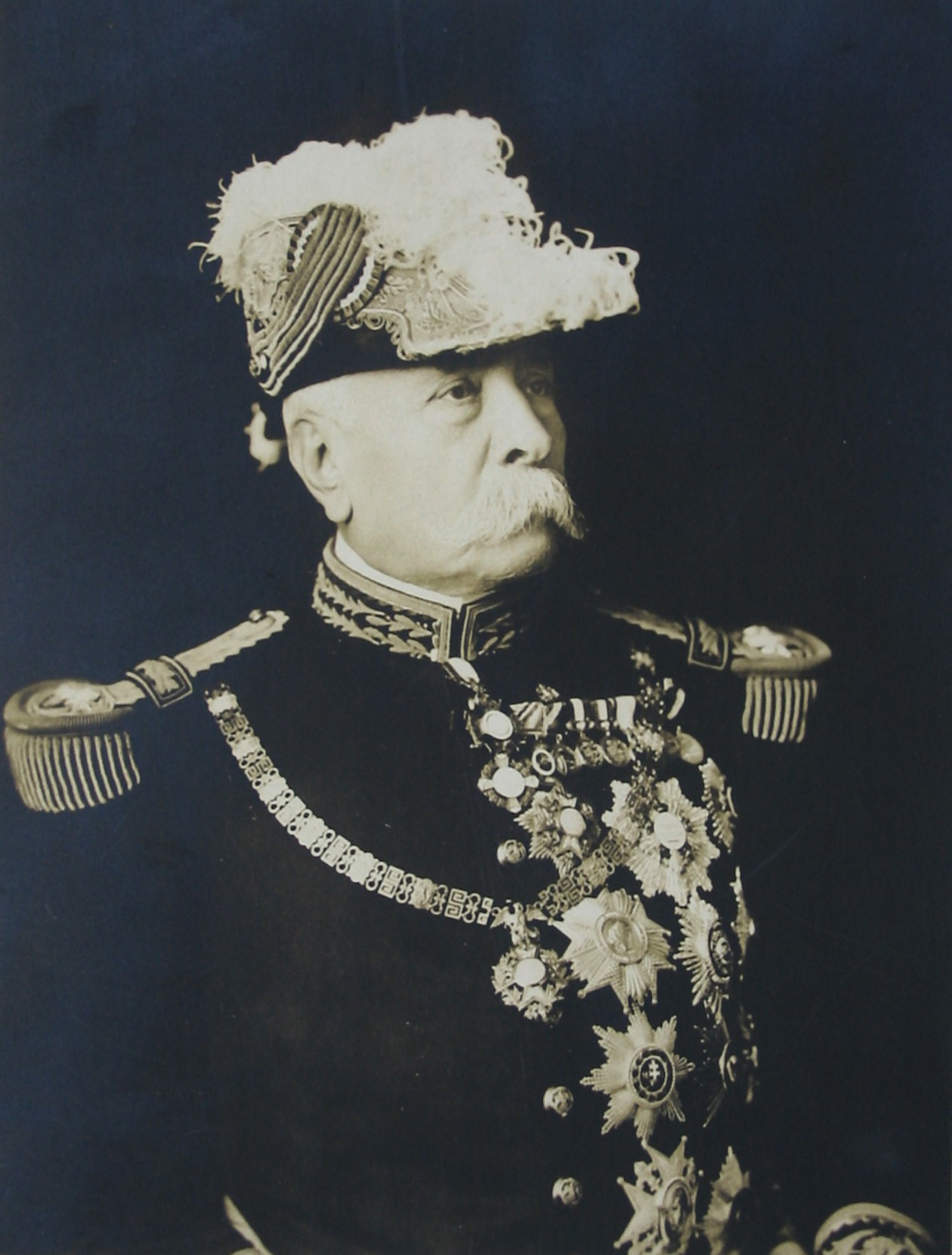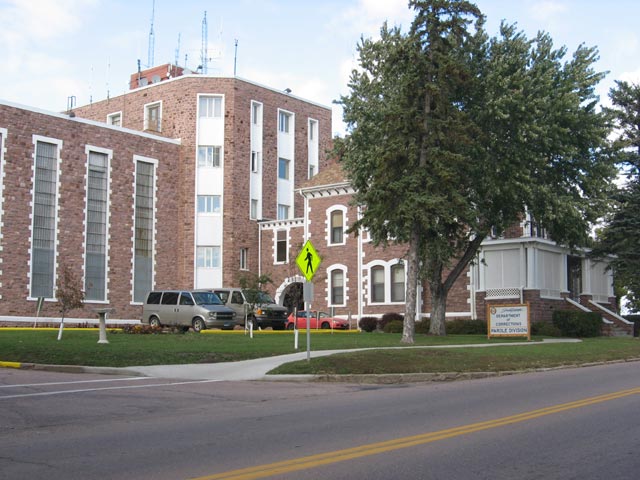|
Verne Miller
Vernon C. "Verne" Miller (August 25, 1896 – November 29, 1933) was a freelance Prohibition hitman, bootlegger, bank robber and the disgraced former sheriff of Beadle County, South Dakota. Most infamously, Miller, as the only identified gunman in the Kansas City massacre, was found beaten and strangled to death shortly after the incident. Early life Born into a family of Scotch-Irish descent in Kimball, South Dakota, Miller moved 35 miles northeast to Huron in 1914 and began working as an auto mechanic. Two years later Miller enlisted in the U.S. Army, seeing action with the Pancho Villa Expedition into Mexico, launched after the Mexican Revolution repeatedly spilled across the border. After American entry into World War I, Miller served in France with the 18th Infantry Regiment, 1st Brigade Combat Team, 1st U.S. Infantry Division, American Expeditionary Forces (AEF). Decorated with the Croix de Guerre by the Government of the Third French Republic for courage under enemy ... [...More Info...] [...Related Items...] OR: [Wikipedia] [Google] [Baidu] |
Kimball, South Dakota
Kimball is a city in Brule County, South Dakota, United States. The population was 572 at the 2020 census. History Kimball was first known as Stake 48 on the Chicago, Milwaukee and St. Paul Railroad line going west out of Mitchell. In 1880, the first homestead claims were made in the vicinity of Stake 48. Kimball was organized as a village in the spring of 1883. The town was named for J. W. Kimball, a railroad surveyor. The 1895 Holy Trinity Church is on the National Register of Historic Places. The two major fires that hit Kimball, South Dakota, were significant events in the town’s history, both causing extensive damage to its downtown area. The first fire occurred in 1890. At that time, the town's buildings were primarily made of wood, which made them highly susceptible to fire. The cause of this fire isn't well-documented, but it's likely that an accident involving a stove, chimney, or open flame—common sources of fire in those days—started the blaze. Due to th ... [...More Info...] [...Related Items...] OR: [Wikipedia] [Google] [Baidu] |
Mexican Revolution
The Mexican Revolution () was an extended sequence of armed regional conflicts in Mexico from 20 November 1910 to 1 December 1920. It has been called "the defining event of modern Mexican history". It saw the destruction of the Federal Army, its replacement by a Liberation Army of the South, revolutionary army, and the transformation of Mexican culture and Federal government of Mexico, government. The northern Constitutionalists in the Mexican Revolution, Constitutionalist faction prevailed on the battlefield and drafted the present-day Constitution of Mexico, which aimed to create a strong central government. Revolutionary generals held power from 1920 to 1940. The revolutionary conflict was primarily a civil war, but foreign powers, having important economic and strategic interests in Mexico, figured in the outcome of Mexico's power struggles; United States involvement in the Mexican Revolution, the U.S. involvement was particularly high. The conflict led to the deaths of around ... [...More Info...] [...Related Items...] OR: [Wikipedia] [Google] [Baidu] |
Sioux Falls, South Dakota
Sioux Falls ( ) is the List of cities in South Dakota, most populous city in the U.S. state of South Dakota and the List of United States cities by population, 117th-most populous city in the United States. It is the county seat of Minnehaha County, South Dakota, Minnehaha County and also extends into northern Lincoln County, South Dakota, Lincoln County. The population was 192,517 at the 2020 United States census, 2020 census, and in 2023, its estimated population was 209,289. According to city officials, the estimated population had grown to 219,588 as of early 2025. The Sioux Falls metro area accounts for more than 30% of the state's population. Chartered in 1856 on the banks of the Big Sioux River, the city is situated in the rolling hills at the junction of Interstate 29 in South Dakota, interstates 29 and Interstate 90 in South Dakota, 90. History The history of Sioux Falls revolves around the cascades of the Big Sioux River. The falls were created about 14,000 years ago ... [...More Info...] [...Related Items...] OR: [Wikipedia] [Google] [Baidu] |
South Dakota State Penitentiary
The South Dakota State Penitentiary is a state prison located in South Dakota's largest city, Sioux Falls. The building's industry shop makes several things for the state, including woodwork and license plates. The State Penitentiary also houses South Dakota's death row for men and the state's execution chamber. History The South Dakota State Penitentiary is located in northern Sioux Falls, occupying approximately thirty acres. First constructed as a territorial prison in 1881, it became the South Dakota State Penitentiary when South Dakota was granted statehood in 1889. Though a large portion of the original buildings remain, numerous structural changes have occurred over the years. The main Penitentiary facility contains three housing units. The G. Norton Jameson Annex began housing inmates in February 1993. The Jameson Annex contains three housing units within a secure perimeter and a minimum security unit known as Unit C, which is located outside the perimeter fence. Inmate ... [...More Info...] [...Related Items...] OR: [Wikipedia] [Google] [Baidu] |
Embezzlement
Embezzlement (from Anglo-Norman, from Old French ''besillier'' ("to torment, etc."), of unknown origin) is a type of financial crime, usually involving theft of money from a business or employer. It often involves a trusted individual taking advantage of their position to steal funds or assets, most commonly over a period of time. Versus larceny Embezzlement is not always a form of theft or an act of stealing ''per se'', since those definitions specifically deal with taking something that does not belong to the perpetrators. Instead, embezzlement is, more generically, an act of deceitfully secreting assets by one or more persons that have been ''entrusted'' with such assets. The persons entrusted with such assets may or may not have an ownership stake in such assets. Embezzlement differs from larceny in three ways. First, in embezzlement, an actual '' conversion'' must occur; second, the original taking must not be trespassory, and third, in penalties. To say that the ... [...More Info...] [...Related Items...] OR: [Wikipedia] [Google] [Baidu] |
Beadle County
Beadle County is a county in the U.S. state of South Dakota. As of the 2020 census, the population was 19,149, making it the 11th most populous county in South Dakota. Its county seat is Huron. The county was created in 1879 and organized in 1880. Beadle County comprises the Huron, SD Micropolitan Statistical Area. History Beadle County, named for Brigadier General William Henry Harrison Beadle, was created by the Dakota Territory Legislature in 1879, and was organized in 1880 with the appointment of three county commissioners by Governor Nehemiah G. Ordway. The first town within Beadle County was Cavour, but Huron was named the county seat when the county commissioners first met there in July 1880. Geography The James River flows south-southeastward through the eastern central part of Beadle County. The terrain of Beadle County consists of low rolling hills, sloping toward the river valley. The county's highest point is its SW corner, at ASL. Its lowest point is on the ... [...More Info...] [...Related Items...] OR: [Wikipedia] [Google] [Baidu] |
Color Sergeant
Colour sergeant (CSgt or C/Sgt) is a rank of non-commissioned officer found in several armies and marine corps. Australia In the Australian Army, the rank of colour sergeant has only existed in the Corps of Staff Cadets at the Royal Military College, Duntroon. Canada Colour sergeant is a rank in the Foot Guards regiments of the Canadian Army, specifically in the Governor General's Foot Guards and the Canadian Grenadier Guards and also previously in The Canadian Guards. It is the equivalent to warrant officer; a colour sergeant wears the rank insignia of a warrant officer (a royal crown) on all uniforms except No. 1 Ceremonial Dress, on which a special rank badge is worn: three chevrons, point down, surmounted by an image of regimental colours. Canadian colour sergeants are addressed in the same manner as their British counterparts. United Kingdom Colour sergeant (CSgt or C/Sgt) is a non-commissioned title in the Royal Marines and infantry regiments of the British Army, r ... [...More Info...] [...Related Items...] OR: [Wikipedia] [Google] [Baidu] |
Third French Republic
The French Third Republic (, sometimes written as ) was the system of government adopted in France from 4 September 1870, when the Second French Empire collapsed during the Franco-Prussian War, until 10 July 1940, after the Fall of France during World War II led to the formation of the Vichy government. The French Third Republic was a parliamentary republic. The early days of the French Third Republic were dominated by political disruption caused by the Franco-Prussian War of 1870–1871, which the French Third Republic continued to wage after the fall of Emperor Napoleon III in 1870. Social upheaval and the Paris Commune preceded the final defeat. The German Empire, proclaimed by the invaders in Palace of Versailles, annexed the French regions of Alsace (keeping the ) and Lorraine (the northeastern part, i.e. present-day department of Moselle). The early governments of the French Third Republic considered re-establishing the monarchy, but disagreement as to the nature of t ... [...More Info...] [...Related Items...] OR: [Wikipedia] [Google] [Baidu] |
Croix De Guerre
The (, ''Cross of War'') is a military decoration of France. It was first created in 1915 and consists of a square-cross medal on two crossed swords, hanging from a ribbon with various degree pins. The decoration was first awarded during World War I, again in World War II, and in other conflicts; the '' croix de guerre des théâtres d'opérations extérieures'' ("cross of war for external theatres of operations") was established in 1921 for these. The was also commonly bestowed on foreign military forces allied to France. The may be awarded either as an individual award or as a unit award to those soldiers who distinguish themselves by acts of heroism involving combat with the enemy. The medal is awarded to those who have been " mentioned in dispatches", meaning a heroic deed or deeds were performed meriting a citation from an individual's headquarters unit. The unit award of the with palm was issued to military units whose members performed heroic deeds in combat and were ... [...More Info...] [...Related Items...] OR: [Wikipedia] [Google] [Baidu] |
American Expeditionary Forces
The American Expeditionary Forces (AEF) was a formation of the United States Armed Forces on the Western Front (World War I), Western Front during World War I, composed mostly of units from the United States Army, U.S. Army. The AEF was established on July 5, 1917, in Chaumont, Haute-Marne, Chaumont, France under the command of then-major general John J. Pershing. It fought alongside French Army, British Army, Canadian Army, British Indian Army, New Zealand Army and Australian Army units against the Imperial German Army. A small number of AEF troops also fought alongside Italian Army units in 1918 against the Austro-Hungarian Army. The AEF helped the French Army on the Western Front during the Third Battle of the Aisne, Aisne Offensive (at the Battle of Château-Thierry (1918), Battle of Château-Thierry and Battle of Belleau Wood) in the summer of 1918, and fought its major actions in the Battle of Saint-Mihiel and the Meuse-Argonne Offensive in the latter part of 1918. Formatio ... [...More Info...] [...Related Items...] OR: [Wikipedia] [Google] [Baidu] |
1st Infantry Division (United States)
The 1st Infantry Division (1ID) is a combined arms division of the United States Army, and is the oldest continuously serving division in the Regular Army. It has seen continuous service since its organization in 1917 during World War I. It was officially nicknamed "The Big Red One" (abbreviated "BRO") after its shoulder patch and is also nicknamed "The Fighting First". The division has also received troop monikers of "The Big Dead One" and "The Bloody First" as puns on the respective officially sanctioned nicknames. It is currently based at Fort Riley, Kansas. The 1st Infantry Division was first deployed to fight in France in World War I, fought extensively in Africa, Italy, France, and Germany during World War II, and participated extensively during United States' campaigns in the Vietnam War. The 1st Infantry was stationed in what became West Germany from 1945 to 1955, and its units rotated to West Germany throughout the remainder of the Cold War. It subsequently deploye ... [...More Info...] [...Related Items...] OR: [Wikipedia] [Google] [Baidu] |
1st Brigade Combat Team, 1st Infantry Division (United States)
The 1st Armored Brigade Combat Team, 1st Infantry Division (aka, "Devil Brigade") is a maneuver brigade combat team (BCT) in the United States Army. It is the oldest permanent brigade in the Army and has some of the oldest units in the United States Army. Headquarters and Headquarters Company (HHC), 1st Brigade served in World War I, Vietnam, Desert Shield and Desert Storm. Its most notable campaigns include the Aisne-Marne, Meuse-Argonne, Picardy, Tet Counteroffensive and the Liberation and Defense of Kuwait. Since Desert Storm, the "Devil Brigade" has deployed to Bosnia, Kuwait, and to Korea to participate in a 2nd Infantry Division exercise. History World War I Headquarters and Headquarters Company was constituted 24 May 1917 into the Regular Army as Headquarters, 1st Brigade, an element of the 1st Expeditionary Division (later redesignated as the 1st Infantry Division). * 1st Infantry Brigade ** 16th Infantry Regiment ** 18th Infantry Regiment ** 2nd Machine Gun Battalio ... [...More Info...] [...Related Items...] OR: [Wikipedia] [Google] [Baidu] |




